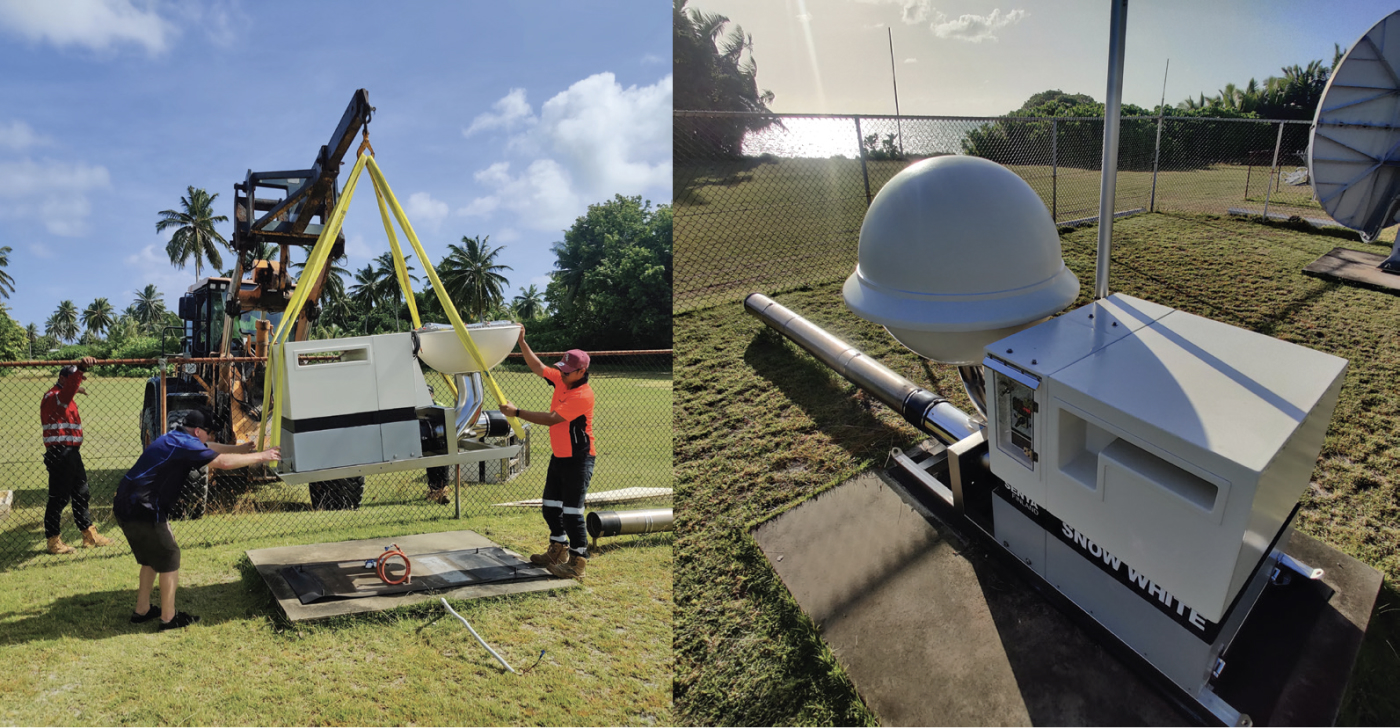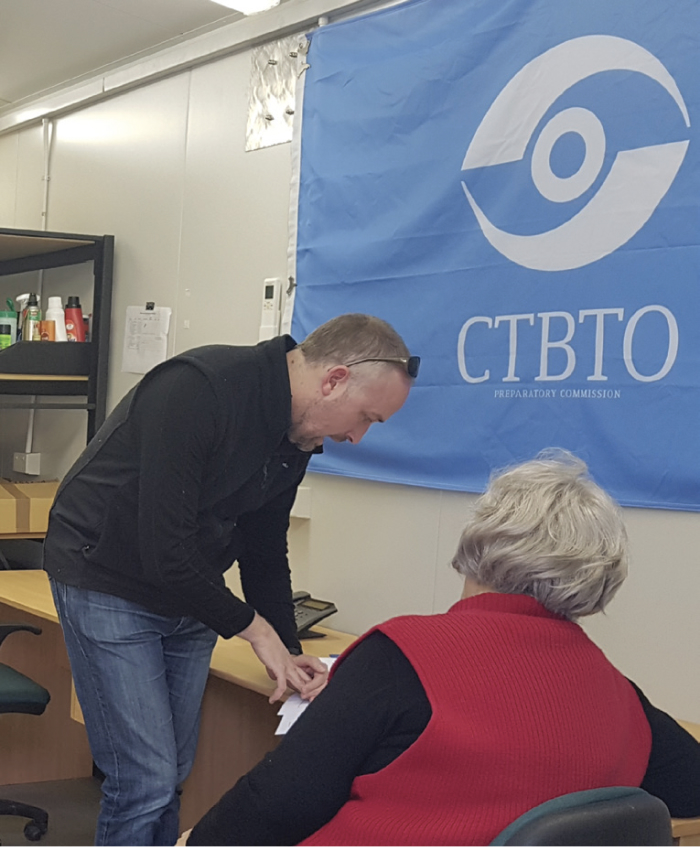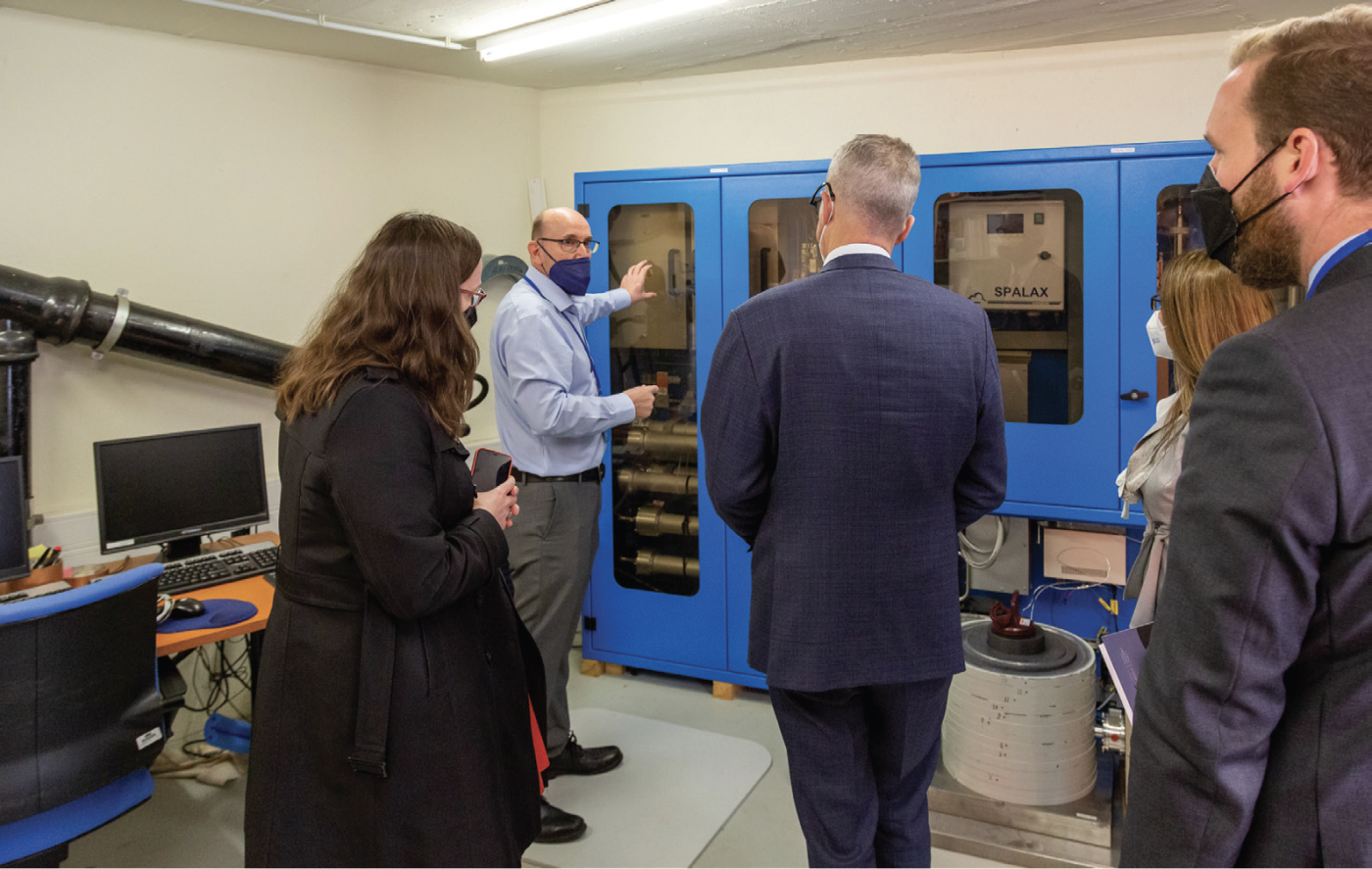Output 1.6: CTBT Implementation
Development of verification systems and arrangements in support of Australia's commitments related to the Comprehensive Nuclear-Test-Ban Treaty.
Performance Measures
- Australia's obligations under the Comprehensive Nuclear-Test-Ban Treaty (CTBT) are met.
- Legal and administrative mechanisms which support Australia's commitments related to the CTBT are effective.
- Contribute to the development of CTBT verification, including through the work of the CTBT Organization (CTBTO) Preparatory Commission.
- Contribute to Australia's CTBT outreach efforts.
Performance Assessment
International Obligations
Australia hosts 20 monitoring stations and one laboratory as part of the CTBT International Monitoring System (IMS). All are certified as operating to CTBTO technical specifications. Ensuring the effective operation of Australia's IMS stations is a routine focus for ASNO.
Australian CTBT stations performed very well. Performance of Australian seismo-acoustic stations, operated by Geoscience Australia and the Australian National University, has been very good throughout the year with an average operational performance of 99.7 per cent across the 13 stations. Radionuclide monitoring data availability, obtained by ARPANSA, remained high across the seven stations, with an average 98.4 per cent over the 12-month reporting period.
To overcome the problems caused by the pandemic, Geoscience Australia were required to visit the seismo-acoustic IMS stations when the opportunity arose and engage local operators to undertake additional tasks. In March 2022, Geoscience Australia were able to complete the recapitalisation work at Buckland Infrasound IMS Station (IS05) near Hobart in Tasmania, including barometric equipment, power and communication upgrades. In June 2022, an Uninterruptible Power Supply (UPS) system upgrade at Cape Leeuwin Hydro-acoustic station (HA01), providing enhanced autonomous operations and monitoring capability.

ARPANSA staff and maintenance crew replacing the IMS station air sampler (part of AUP08) on Cocos Island. (Image courtesy of ARPANSA)
ARPANSA was able to complete all maintenance operations, except at Mawson Antarctica (AUP05) due to an inability to get to the site. This included the replacement of the air sampler on Cocos Island IMS radionuclide station (AUP08, pictured below).

Michael Lane discusses with the local operator proposed maintenance work at the Cape Leeuwin Hydro-acoustic station (HA01). (Image courtesy of ASNO)
ASNO continued to work with the CTBTO on plans for maintaining the cable that brings to shore data for the Cape Leeuwin hydrophone array (HA01), including an in-person meeting with staff from the Provisional Technical Secretariat in February. ASNO experts visited Perth and Cape Leeuwin between 31 May and 3 June 2022 to talk with WA state authorities and the local operator and surrounding businesses about the proposed maintenance to HA01.
In March 2022, I met with CTBTO senior management and received a comprehensive technical briefing on the IMS and operations of the International Data Centre.
ASNO experts met with the Australian Antarctic Division in April 2022 to better understand the long-term redevelopment plans of facilities on Macquarie Island and how it can enhance the operation of the IMS radionuclide monitoring facility on the island.
Nuclear-Test-Ban Verification
ASNO administers funding for Geoscience Australia to carry out nuclear test monitoring through its network of seismic stations in addition to those of the CTBT's IMS. This arrangement, set out in a Letter of Understanding between Geoscience Australia and ASNO, is reviewed each year. ASNO is satisfied that Geoscience Australia has met its requirements under the Letter of Understanding during the reporting period.
Although the CTBT is not yet in force, its IMS is now substantially in place, with around 90 per cent of Treaty-designated stations certified for operation by 2022. The system detects and reports on many thousands of events each year. Almost all of these can be clearly identified as natural in origin and in the twenty-first century only the DPRK has been detected conducting nuclear test explosions.
Since the 2017 declared nuclear explosion, Geoscience Australia has reported to ASNO on the detection of 59 tectonic events located in the vicinity of the DPRK test site at Punggye-ri. Based on the signal characteristics, some of these appear to be a continuing series of aftershocks following the large September 2017 test explosion. During this reporting period, Geoscience Australia continued to monitor seismic activity in the vicinity of the DPRK test site at Punggye-ri and reported to ASNO on the detection of 12 earthquakes. The sizes of 11 of these events ranged from magnitude 2.2 to 2.8, and an earthquake on 11 February 2022 with a body-wave magnitude (mb) of 3.5 was assessed to be naturally occurring. Based on technical analysis of the detections, it is unlikely that any of these events were the result of the DPRK's recent reconstruction at the test site.
Australian Participation in CTBTO verification development activities
The CTBTO Preparatory Commission, including its member states, continues to carry out work to ensure the Treaty's verification regime will be ready to meet requirements in the CTBT when the Treaty enters into force.

Director General ASNO, Dr Geoffrey Shaw received a briefing on CTBT radionuclide detection equipment in Vienna. (Image courtesy of CTBTO)
ASNO coordinates and contributes to Australia's specialist support for this work, which is focused on meetings of the CTBTO's Working Group B. Experts from Geoscience Australia and ARPANSA contribute mainly in relation to ongoing development of the CTBT's IMS and International Data Centre (IDC). When the CTBT enters into force, it will provide for on-site inspections (OSI) to determine whether a nuclear explosion has taken place in a particular area. ASNO's Malcolm Coxhead, as Task Leader for the elaboration of an Operational Manual on the conduct of OSI, continued to chair discussions on this subject at the CTBTO Preparatory Commission's technical working group. As well as chairing a hybrid session of the CTBTO Working Group B on OSI Manual development in February 2022, Malcolm also participated in meetings of an expert group advising the CTBTO's Provisional Technical Secretariat on plans for on-site inspection exercises in the coming years.
Malcolm Coxhead participated in a tabletop exercise for CTBTO Executive staff, including Executive Secretary (ES) Dr Robert Floyd, where the staff tested the decision-making procedures in place to declare an OSI activity.
ASNO coordinates the involvement of Australians in training aimed at supporting the operation of the IMS and Australia's national data centre (NDC). While around 90 per cent of CTBT IMS stations are now in place worldwide, detailed preparatory work is continuing to bring the IMS and International Data Centre to satisfactory levels of readiness. ASNO coordinates Australia's contribution to the CTBTO's work in this area, working with technical specialists from Geoscience Australia and ARPANSA. During the reporting period, experts from both organisations participated in specialist CTBTO training in support of Australia's IMS and NDC operations.
Civil and Scientific uses of IMS data
Selected IMS data continues to be used for civil and scientific purposes in Australia. For example, data from seismic stations is used in the Australian National Earthquake Alert Centre for the detection and location of numerous Australian and overseas earthquakes and for tsunami warning.
For example, the 15 January 2022 explosive eruption of the Hunga Tonga-Hunga Ha'apai volcano was detected by every seismic, hydro-acoustic and infrasound facility of the CTBT's IMS worldwide. The explosive energy released was up to twice as large as the Soviet Tsar Bomba nuclear test in 1961 – the largest nuclear test ever conducted.
Outreach
Geoscience Australia, in collaboration with New Zealand counterparts, plan to provide NDC training in Malaysia before the end of 2022. This training is an initial engagement with Nuklear Malaysia on CTBT cooperation and is design to build further regional capacity on analysis of CTBT data. ASNO hopes that NDC training can be expanded to other Asia-Pacific states.

